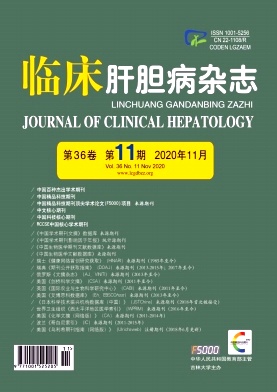Objective To investigate the clinical significance of highly sensitive nucleic acid detection in precise antiviral therapy for patients with liver cirrhosis and its association with aminotransferase level. Methods A total of 377 patients with hepatitis B cirrhosis who were hospitalized or attended the outpatient service from May 2013 to April 2019 were enrolled and tested by both domestic HBV DNA detection and highly sensitive Cobas HBV DNA detection. All patients underwent biochemical examination,four blood coagulation tests,routine blood test,and upper abdominal computed tomography or ultrasound. Sensitivity of different HBV DNA detection reagents was compared in liver cirrhosis patients with a low viral load,and the correlation between alanine aminotransferase( ALT) level and viral load was analyzed.The paired t-test was used for comparison of continuous data before and after treatment. The receiver operating characteristic( ROC) curve was used to screen out the optimal predictive values of ALT at different cut-off values of HBV DNA. Results Among the 377 patients with hepatitis B cirrhosis,215 tested positive and 162 tested negative by domestic HBV DNA,and among these 162 patients,104( 64. 2%) tested positive by Cobas HBV DNA detection,with a mean level of 267. 5 ± 42. 3 IU/ml. After 24 weeks of antiviral therapy,the 104 patients with hepatitis B cirrhosis had significant improvements in viral replication level,ALT,and Child-Pugh score for liver function; HBV DNA decreased from 267. 5 ± 32. 2 IU/ml before treatment to 59. 6 ± 7. 7 IU/ml after treatment( t = 3. 486,P = 0. 002),ALT decreased from87. 1 ± 10. 8 U/L before treatment to 36. 5 ± 7. 6 U/L after treatment( t = 3. 235,P = 0. 020),and the Child-Pugh score decreased from6. 5 ± 0. 7 before treatment to 5. 7 ± 0. 5 after treatment( t = 2. 928,P = 0. 041). The ROC curve analysis of ALT in predicting HBV DNA decision point showed that an ALT level of 29 IU/L was the most sensitive cut-off value for predicting HBV DNA < 20 IU/ml,with an area under the ROC curve of 0. 904,a sensitivity of 1. 0,and a specificity of 0. 237. Conclusion Precise detection helps to guarantee the precise clinical treatment of patients with hepatitis B cirrhosis and improve their treatment outcome and prognosis. An ALT level of 29 IU/L is a sensitive indicator for predicting patients with negative Cobas HBV DNA,so as to achieve individualized precise screening and treatment.









 本站查看
本站查看




 DownLoad:
DownLoad: